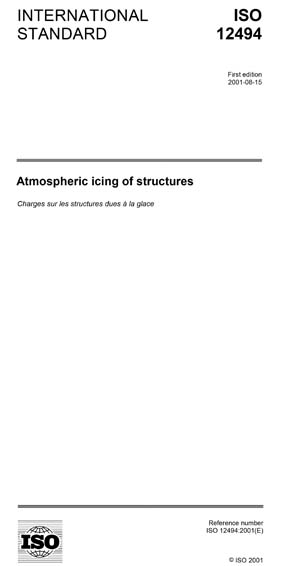Historical
ISO 12494:2001
Atmospheric icing of structures
General
This International Standard describes the general principles of determining ice load on structures of the types listed in 1.2.
In cases where a certain structure is not directly covered by this or another standard or recommendation, designers may use the intentions of this International Standard. However, the user should always consider carefully the applicability of the standard (recommendation) to the structure in question.
The practical use of all data in this International Standard is based upon certain knowledge of the site of the structure. It is necessary to have information about the degree of "normal" icing amounts (= ice classes) for the site in question. For many areas, however, no information is available.
Even in such cases this International Standard can be useful, because local meteorologists or other experienced persons should be able to, on the safe side, estimate a proper ice class. Using such an estimate in the structural design will result in a much safer structure, than designing without any considerations for problems due to ice.
CAUTION It is extremely important to design for some ice instead of no ice, and then the question of whether the amount of ice was correct is of less importance. In particular, the action of wind can be increased considerably due to both increased exposed area and increased drag coefficient.
Application
This International Standard is intended for use in determining ice mass and wind load on the iced structure for the following types of structure:
- masts;
- towers;
- antennas and antenna structures;
- cables, stays, guy ropes, etc.;
- rope ways (cable railways);
- structures for ski-lifts;
- buildings or parts of them exposed to potential icing;
- towers for special types of construction such as transmission lines, wind turbines, etc.
Atmospheric icing on electrical overhead lines is covered by IEC (International Electrotechnical Commission) standards.
This International Standard is intended to be used in conjunction with ISO 2394.
Content Provider
International Organization for Standardization [iso]






